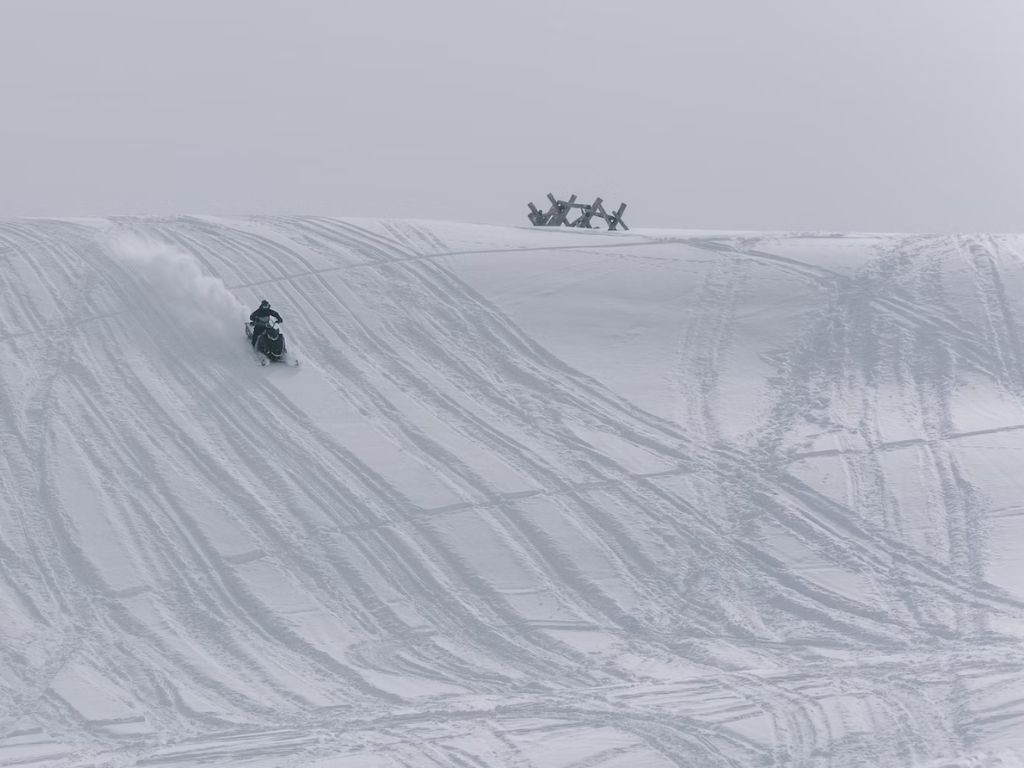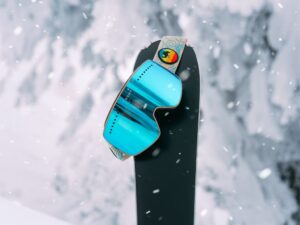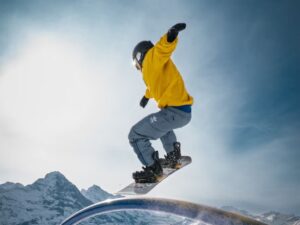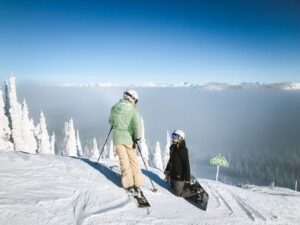Powder days on the slopes are pure magic – the feeling of floating on a sea of snow, the exhilaration of carving through untouched terrain.
As a snowboarding enthusiast who’s spent countless hours riding park snowboards, I couldn’t help but wonder if I could ride a park snowboard on powder. I know it’s not an idea, but it wouldn’t hurt to try, would it?
So, I hit the slopes on a fresh powder day with my park board, eager to put it to the test. Oh, it hurt! Well, not literally, but it was difficult.
Technically, you can ride on powder with a park snowboard, but it’s exhausting. You’ll have less control over your board due to the board’s incompatibility with the snow type, leading to an unstable stance that’ll strain your back and leg.
The quick answer is: yes, a bunch of caveats. But don’t stop reading there. There’s a lot to learn, and I’m excited to share it with you. Let’s dive in!
1. How do park boards differ from powder boards?
Understanding their distinct characteristics can significantly impact your snowboarding experience. Lemme explain how.

A. Shape and Size
Park boards are generally shorter, offering excellent maneuverability and making executing tricks and jumps easier. However, full-camber park boards aren’t ideal for floatation in deep powder due to their short length and lack of rocker technology.
In contrast, powder boards are longer to enhance floatation in deep snow. The directional shape, featuring a longer and wider nose, lets the board stay on top of the powder, preventing it from sinking.
B. Flex
Park boards have a softer flex, offering a playful and forgiving ride that, unfortunately, reduces control and edge hold in deep powder conditions. In comparison, powder boards come with a stiffer flex, designed to easily cut through snow.
C. Camber Profiles
Powder boards frequently adopt rocker or hybrid rocker profiles to enhance floatation, thus preventing nosedives in powder. But park boards often feature traditional or hybrid camber profiles.
D. Shape and Riding Direction:
Park boards usually have twin shapes, making them symmetrical and allowing easy switch-riding in the terrain park. Powder boards have directional shapes designed to be ridden primarily in one direction.
2. Limitations of Park Snowboards in Deep Powder
- Lack of Floatation: As you know by now, you may experience sinking and slowing down, requiring extra effort to keep the nose above the powder.
- The strain on Back Leg: You’ll often need to lean back, significantly straining the back leg. This strain can become exhausting, especially during extended powder rides.
- Difficulty in Turning: Navigating through trees, steep or narrow terrains commonly found in powder-filled areas may require additional effort and skill.
- Vulnerability to Damage: Park boards usually have thinner edges, making them more susceptible to damage if riders encounter snow-covered rocks or other obstacles in powder-filled terrains.
While riding powder with a park snowboard is possible, riders should be prepared for its challenges. And if you frequently find yourself in deep powder conditions, investing in a dedicated powder board may be a game-changer.
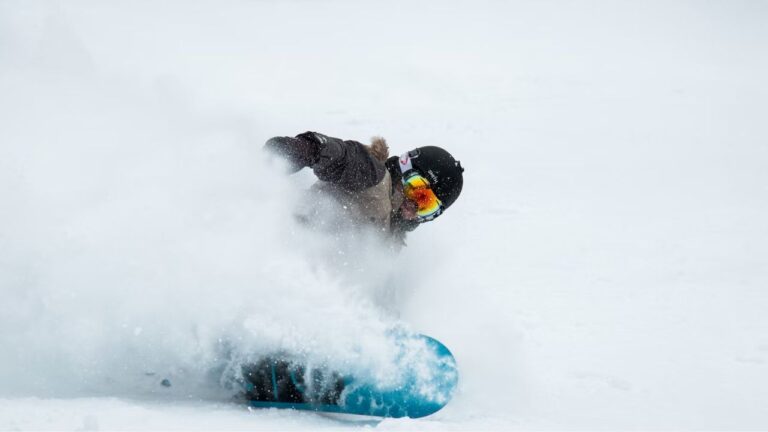
3. Advantages of Using Park Snowboards in Powder
While park snowboards may be limited in deep powder, they offer advantages when bought over a powder-specific board.
- Versatility: Park boards can still provide an enjoyable and responsive ride in shallow powder or variable snow conditions, making them suitable for mixed-terrain adventures.
- Playfulness and Trick Potential: Riders can still enjoy popping off natural features, attempting stylish tricks, and incorporating freestyle elements into their powder rides.
- Cost-Efficiency: Investing in a separate powder board can be expensive, especially for riders occasionally encountering powder conditions.
4. Tips for Riding Park Snowboards in Powder
- Choose the Right Powder Day: Opt for days when the powder is relatively shallow or packed down. Riding a park board on a day with excessively deep powder might lead to more frustration than fun.
- Set Your Stance Back: By doing so, more of your weight will be concentrated towards the board’s tail, lifting the nose above the snow.
- Adjust Pressure on the Back Leg: It’s for extra float and improved control of your board’s nose. Finding the right balance can be tricky initially, but you’ll learn to fine-tune the pressure with practice.
- Practice Riding Switch: It helps improve your overall fitness and strengthens muscles that may not be regularly used during your normal stance.
- Adjust Your Speed: Slow down and adopt a more surf-like approach, allowing the board to glide smoothly on top of the snow.
- Master Your Turns: Practice making smooth, wide turns to maintain stability and control. Avoid quick, sharp turns that might lead you to lose balance.
- Stay Centered and Balanced: Avoid overcompensating and shifting your weight too far back. Maintain a centered and balanced stance instead.
Incorporating these tips into your powder riding repertoire allows you to elevate your game with your trusty park snowboard.
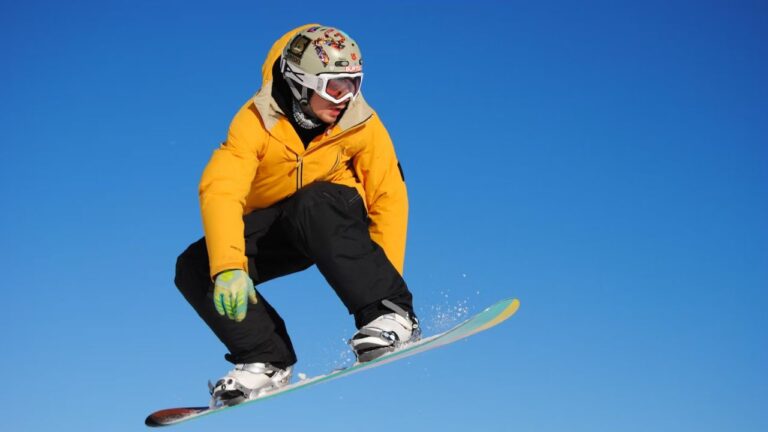
5. Should I get a pure powder snowboard?
Pure powder boards are designed to excel in challenging conditions, offering unmatched floatation, control, and stability. But before making the leap, consider these factors to help you decide:
- Powder Dominance: Evaluate how often you ride in deep powder. If it’s frequent, you might consider buying a specialized snowboard.
- Specialized Design: Pure powder snowboards typically have a distinct directional shape with a longer, wider nose. However, remember that the specialized design might be less versatile in other snow conditions.
- Backcountry Adventures: The board’s construction and profile are optimized for navigating challenging, powder-laden backcountry terrains.
- Existing Quiver: Consider the other snowboards you already own. If you have a versatile all-mountain board that performs reasonably well in powder, you may not need a pure powder snowboard.
- Riding Preferences: If you prioritize the unique experience of powder riding, a pure powder snowboard will undoubtedly elevate your powder days. However, if you primarily ride groomed trails or enjoy park and freestyle riding, your existing board or an all-mountain board might suffice.
- Budget and Storage: Consider your budget and storage capacity. A pure powder snowboard can be a significant investment, so ensure it aligns with your budget and priorities.
- Demo and Test Rides: Testing the board in powder conditions can help you gauge its performance and determine if it suits your riding style and preferences.
6. What is the difference between park and all-mountain boards?
| Aspect | Park Board | All-Mountain Board |
| Design | Symmetrical Twin Shape | Directional or Directional Twin |
| Purpose | Freestyle and Park Riding | Versatility in All Terrain |
| Flex | Softer Flex for Tricks and Jibs | Medium Flex for All Conditions |
| Profile | Camber, Rocker, or Hybrid Profiles | Camber, Rocker, or Hybrid Profiles |
| Stance | Centered Stance | Often Setback Stance for Versatility |
| Terrain Dominance | Terrain Park and Freestyle Features | Performance Across Various Terrains |
| Powder Performance | Limited Floatation in Deep Powder | Better Floatation in Powder |
| Edge Hold | Less Stability on Icy or Hardpack Snow | Enhanced Edge Hold in All Conditions |
| Turnability | Highly Maneuverable for Park Tricks | Versatile and Responsive Turns |
| Speed and Stability | Less Stable at High Speeds | Stability at Various Speeds |
| Skill Level | Suitable for Intermediate to Advanced | Suitable for All Skill Levels |
7. Conclusion
In conclusion, riding park snowboards in powder can be a fun and challenging experience, but it comes with limitations.
These boards are designed for freestyle riding and excel in terrain parks, but their performance in deep powder might differ from that of dedicated powder boards.
While you can ride park boards in shallow powder or mixed conditions, their lack of floatation and softer flex can make riding in deep powder more exhausting and less stable.
For those who frequently ride in deep powder and prioritize the exhilarating floaty feeling, investing in a pure powder snowboard with a wider profile and stiffer construction is worth considering.

